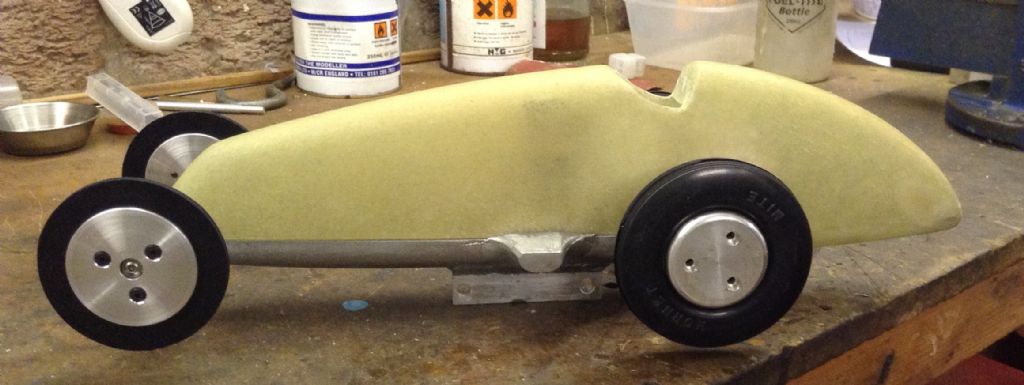I remember when i was in high school and absolutely hooked on RC cars, i would peruse the few R/C magazines in the school library and marvel at some of the cars people had built -one was a 4wd chain driven twin motor jobby that I literally drooled the print off the pages ! Anyhow some 40yrs later i have restored , built ,made and raced a lot of cars – mostly on road but id play around with offroad stuff occasionally.
I would advise you to sit down with your son and figure out exactly what he wants to build as there are a few options that will require different skill sets .
So a list similar to this might get you both pointed in the right direction :
On road or offroad – remembering that an offroad car can drive on a road but an on road car will struggle if it has low ground clearance.
Electric or internal combustion engine – mostly governs your drive system and battery requirements and is governed by the size of the car – big cars need big motors and the line trimmer engine is perfect for big cars.
Suspension or a basic pan car – setting up and making suspension components adds to complexity and will require machinery, a pan car has no suspension and is a lot easier to make ( just for clarity i call a pan car a car that is made from a flat plate chassis , no suspension and no differential) some have different descriptions.
Physical size – 1/12 ,1/10,1/8 or 1/5 – bigger is easier to make but will cost a bit more for materials but you can use engines from old line trimmers to power it but you will need beefier servos to control it.
Radios – this is an area you don’t want to skimp on so don’t use those cheapie radios as they have a small transmission range and usually no failsafe features .
You used to be able to download a car set up guide from Hudy which explained in great detail how suspension geometry , shock settings and spring rates worked – the basic fundamentals are the same for a model car or a full sized vehicle – physics is physics – it doesn’t change .
 JasonB.
JasonB.

 and means he can make mess there and bring bits home to assemble/ work on the electronics at home.
and means he can make mess there and bring bits home to assemble/ work on the electronics at home. 


